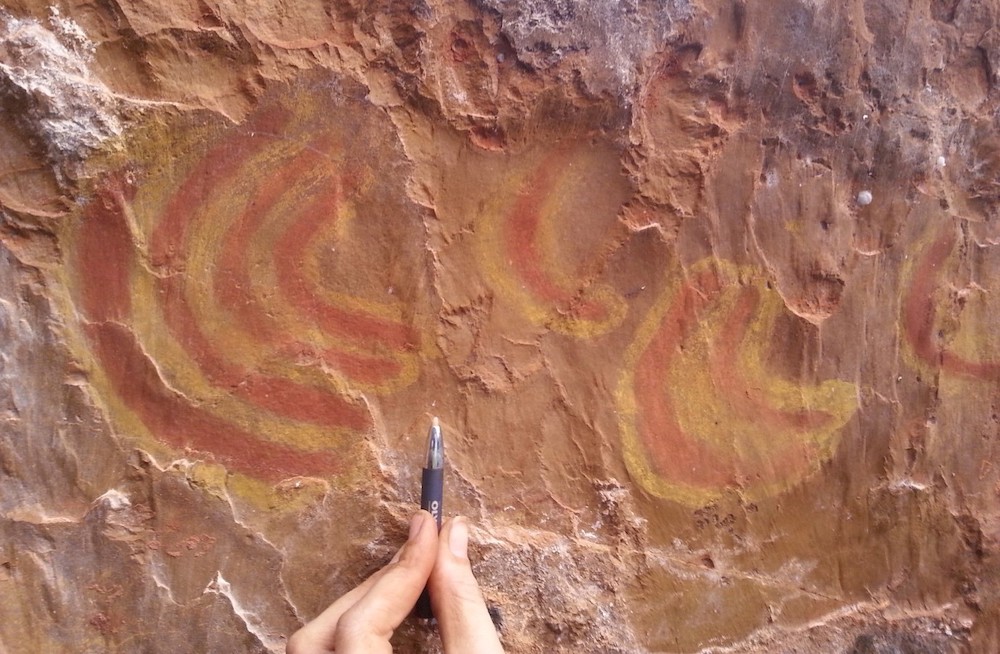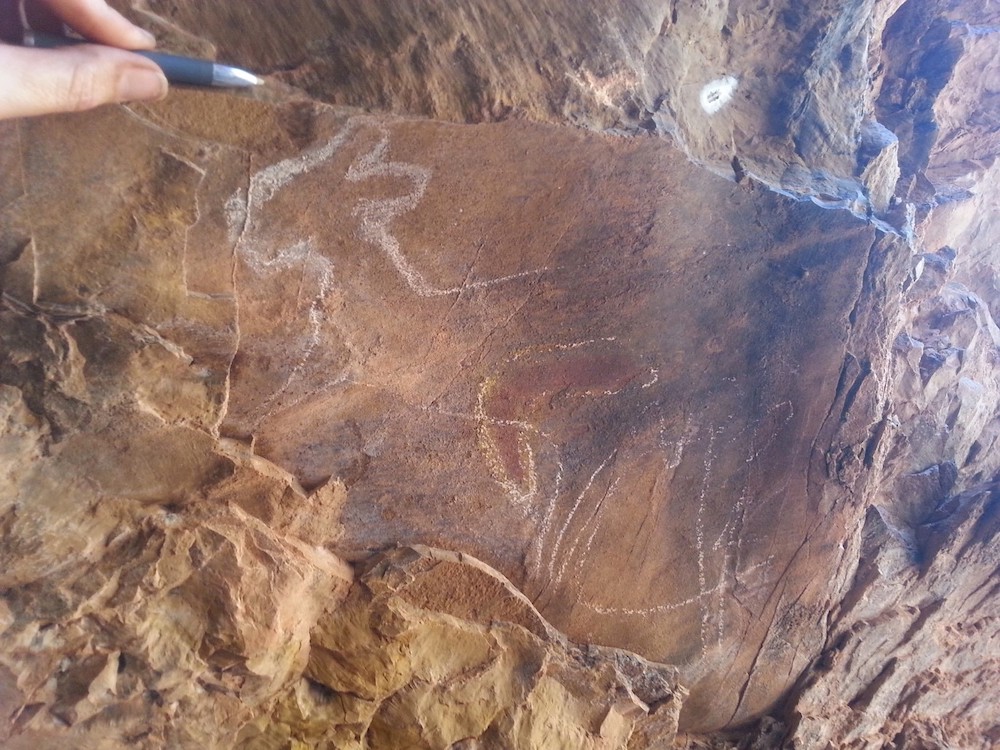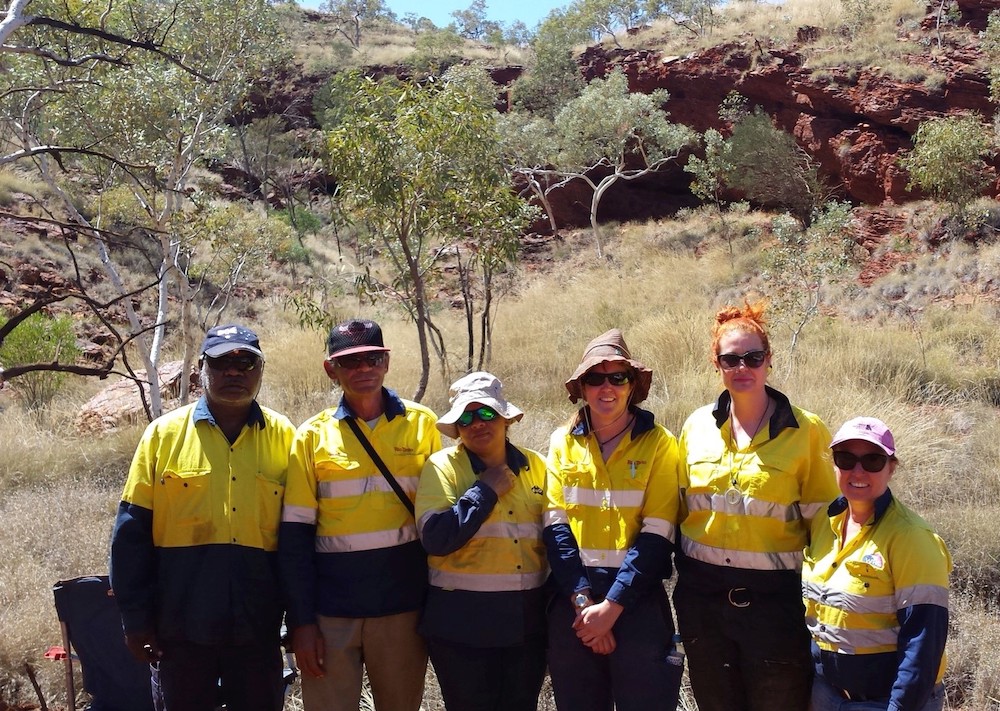
Griffith University researchers were part of a team that helped secure the protection of a culturally significant Aboriginal rock art site in Pilbara, Western Australia.
In research published in and from the , with the and consultant archaeologists and former Rio Tinto Heritage Advisor , report on a scientific study of the ochre seams, grindstones and rock shelters in a gorge in the eastern Hamersley Range.
The work undertaken by Dr Huntley, Associate Professor Wallis and the team in 2017 was part of an investigation to learn more about the sites on behalf of Nyiyaparli Traditional Owners.
“Hope Downs Management Services, a joint venture between Rio Tinto and Hancock Prospecting, was granted a Section 18 consent over this area in 2002, giving them the legal right to impact Aboriginal heritage,” Dr Huntley said.
“Rio Tinto agreed this investigative process would occur before the destruction of the site as part of their mining operations, however, the discovery of rock art during the detailed archaeological works led to a change of plans around the mine design.”
The team discovered rare panels of painted and drawn Aboriginal art hidden on a low ceiling in one of the rockshelters in Nyiyaparli country (central Pilbara, Western Australia).
“Nyiyaparli Traditional Owners advised the rock art is extremely significant and requested the mine plans be revised in order to ensure long-term protection of the site.”

Detailed scientific work by the team married geochemical and residue analyses with traditional knowledge to gain a rare glimpse into ‘the rock art of the everyday’. The art panels were compared with ochre seams and the grindstones used to prepare paints.
“Several of the other examples of painted rock art in the central Pilbara are known to occur in site complexes where the sides of gorges are painted, leading into larger galleries where people gathered in big groups” Associate Professor Wallis explained. “This site is different.”
These artworks were made using local ochre sources, the grindstones in the site showing paints were processed alongside plants and animals. Coupled with their ‘hidden’ location, the evidence matches the Nyiyaparli Traditional Owners’ interpretation, that the rockshelter was a good camping place for family groups in the seasonally cyclonic weather and was revisited by the people of the area over hundreds if not thousands of years.
“Hope Downs Management Services subsequently redesigned its mine, and the rock shelter and artworks are now safe. But the Section 18 consent giving them the legal right to destroy the site remains.”
Associate Professor Wallis says the destruction of globally significant Aboriginal sites has ignited fierce debate about heritage conservation but concedes the way sites are (or are not) protected is complicated.

“Approvals for mines can be granted before all the Aboriginal heritage places within an area have been located, recorded and assessed,” she said.
“Approvals are regularly based on the initial stages of heritage assessment where significance is not well understood, because it is based on a very limited amount of information (and generally without the benefit of specialist studies).This is not in keeping with cultural heritage best practice, and undermines the notion of ‘fully informed consent’.”
“Under Western Australian heritage laws there is a requirement to report the existence of sites, though a timeframe is not specified. What this means is that a site may be located during a survey and its presence not reported until years later when a developer wants to impact the area,” Dr Huntley added.
“This research highlights the importance of detailed scientific work in supporting Traditional Owners to demonstrate the significance of their heritage within Western legal frameworks.
“Moreover, this example shows that resource companies, at least in some cases, need not act on previously issued consents to impact Aboriginal sites and can instead change their plans to provide long term protection for this priceless heritage.”





